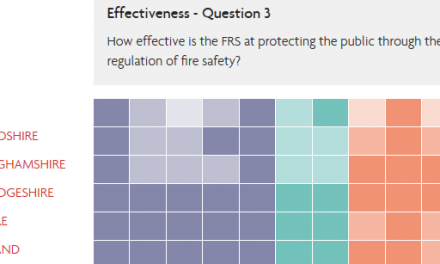What Does ‘Reasonably Practicable’ Actually Mean?
In October 2014, I wrote an article about the increased use in fire safety cases of charges brought under Article 8 of the FSO. Now that the maximum fine limitation has been removed in the Magistrates Court, charges brought under Article 8 are likely to increase.
As outlined previously, Article 8 (1) (a) imposes a strict liability responsibility upon employers to take such general fire precautions so far as is reasonably practicable. Unfortunately, the FSO does not provide a definition for what is, and what is not ‘reasonably practical’ and as fire safety case law through the courts has been limited to issues regarding sentence, the phrase has not been defined by the courts in the context of the FSO.
Article 8(1)(a) deals with the responsibilities of employers. Guidance can therefore be found by looking at the Health and Safety at Work Act 1974, which does contain guidance regarding the definition.
The 1974 Act uses the phrases ‘as low as reasonably practicable’ (ALARP) and ‘so far as is reasonably practicable’ (SFAIRP), which effectively mean the same thing.
Using this guidance, making sure a fire risk has been reduced ALARP is about weighing the risk of fire against the cost in terms of time, money and manpower needed to further reduce it. Clearly, there will be a presumption that the responsible person should implement any risk reduction measures, where it is possible to do so. To justify any decision not to spend time, money and manpower in reducing risk, the responsible person would have to show that the costs would be grossly disproportionate to the benefits of risk reduction.
Accordingly, the process is not one of balancing the costs and benefits of measures, but rather, of implementing all necessary measures for minimising fire risks except where they are ruled out because they involve grossly disproportionate sacrifices.
The definition set out by the Court of Appeal (in its judgment in Edwards v. National Coal Board, [1949] 1 All ER 743) is:
“‘Reasonably practicable’ is a narrower term than ‘physically possible’ … a computation must be made by the owner in which the quantum of risk is placed on one scale and the sacrifice involved in the measures necessary for averting the risk (whether in money, time or trouble) is placed in the other, and that, if it be shown that there is a gross disproportion between them – the risk being insignificant in relation to the sacrifice – the defendants discharge the onus on them.”
Put very simply, spending £50,000 on fire extinguishers in a building with adequate alarms and fire compartmentation may be grossly disproportionate; but spending £50,000 on an alarm system to provide early warning to 30 members of staff may be entirely proportionate.
It would be for the court to decide whether the responsible person had taken such general fire precautions as would ensure, so far as is reasonably practicable, the safety of any of his employees. This would be a matter of fact for a jury or magistrates to decide by exercising their judgement, having considered the nature of the risk of death or serious injury resulting from fire and the sacrifices required on the part of the employer to effectively reduce that risk. To assist the Court, reference would be made to the guidance documents and British standards, to assess what is good practice in specific types of premises.
The concept of ‘reasonably practicable’ allows the FSO to set goals for the responsible person, rather than being overly prescriptive about what is required in different types of premises. It enables the enforcing authorities to consider what they believe is reasonably practicable in any given situation, and it allows employers the opportunity to weigh the risk of fire against a cost benefit analysis when deciding how to comply with their responsibilities.
However, Article 8 (1) (a) imposes a more onerous responsibility upon employer responsible persons than other duty holders under Articles 3 and 5, who can turn to the slightly more generous Article 33 defence that they took all reasonable precautions and exercised all due diligence to avoid the commission of such an offence.
However, Article 34 must not be forgotten. This article reverses the burden of proof from the prosecution to the defendant. Normally, it is for the prosecution to prove beyond reasonable doubt that the defendant has committed an offence, but where the defendant believes that they have done enough to comply with the order, ‘… It is for the accused to prove that it was not practicable or reasonably practicable to do more than was in fact done to satisfy the duty or requirement.’
Compliance so far as is reasonably practicable does not represent zero risk.
As the Health and Safety Executive put it: “We have to expect the risk arising from a hazard to be realised sometimes, and so for harm to occur, even though the risk is ALARP. This is an uncomfortable thought for many people, but it is inescapable. Of course we should strive to make sure that duty-holders reduce and maintain the risks ALARP, and we should never be complacent but, nevertheless, we have to accept that risk from an activity can never be entirely eliminated unless the activity is stopped.”



